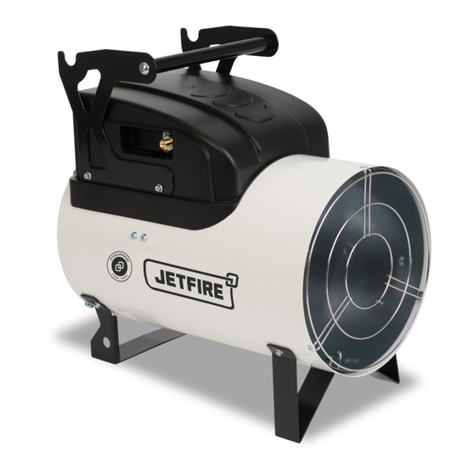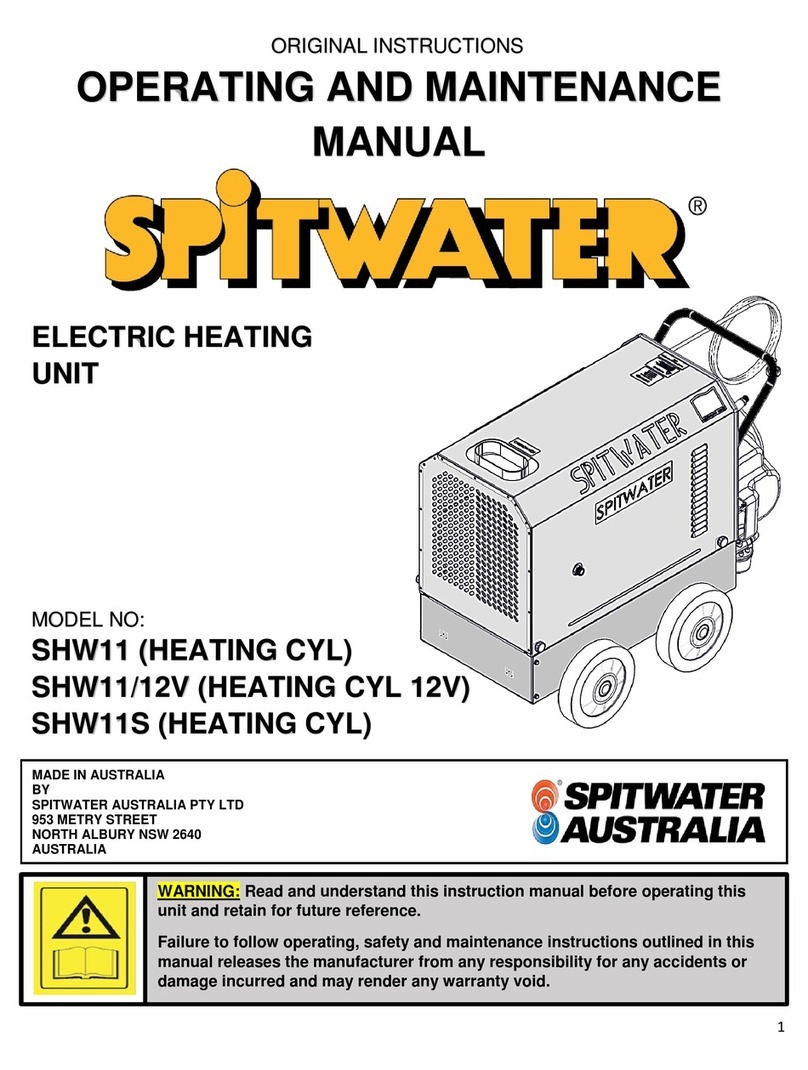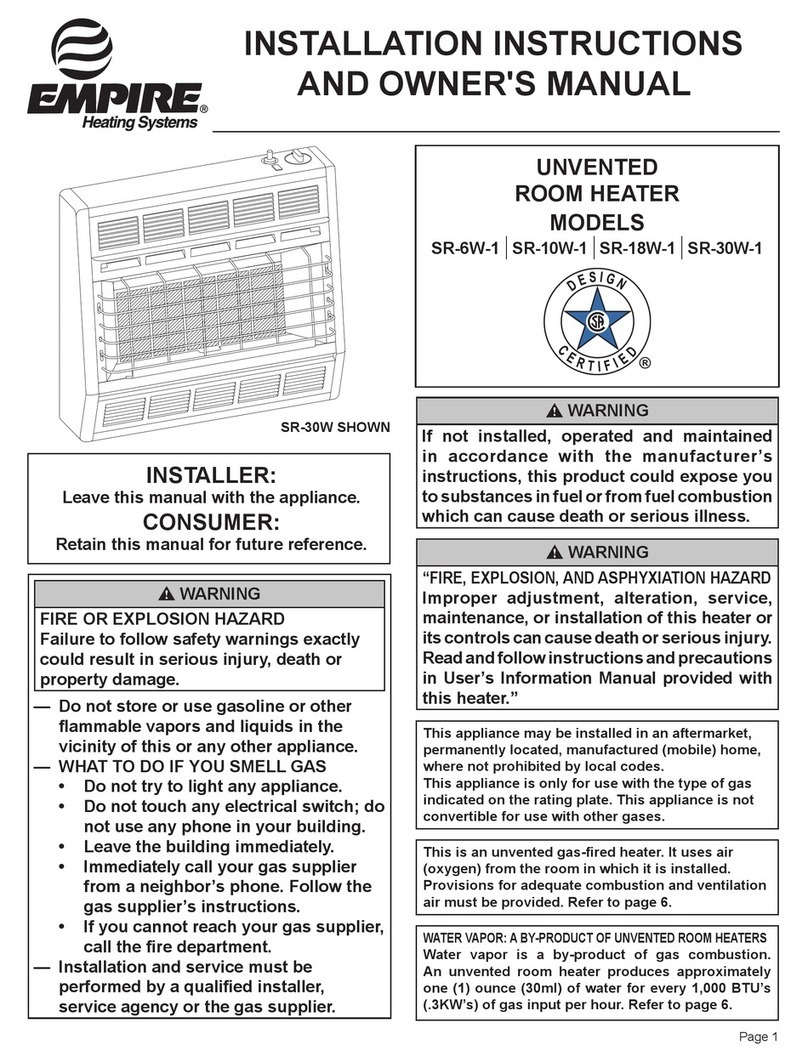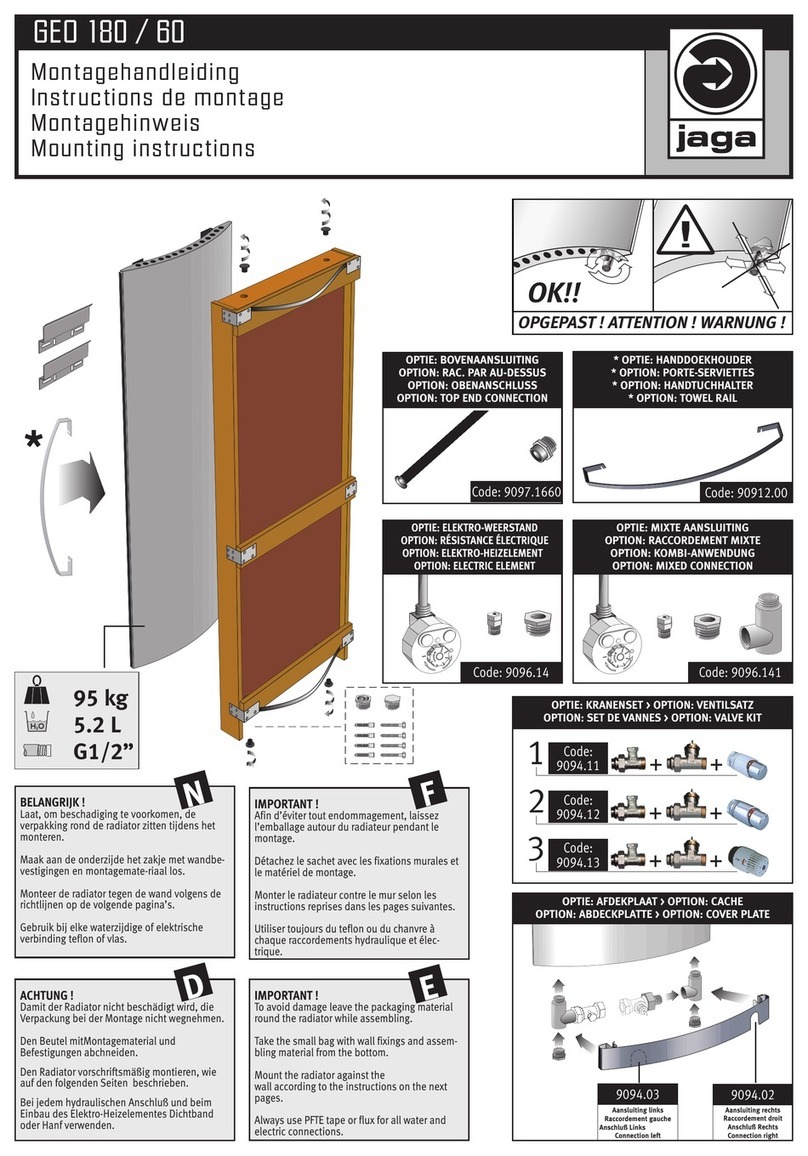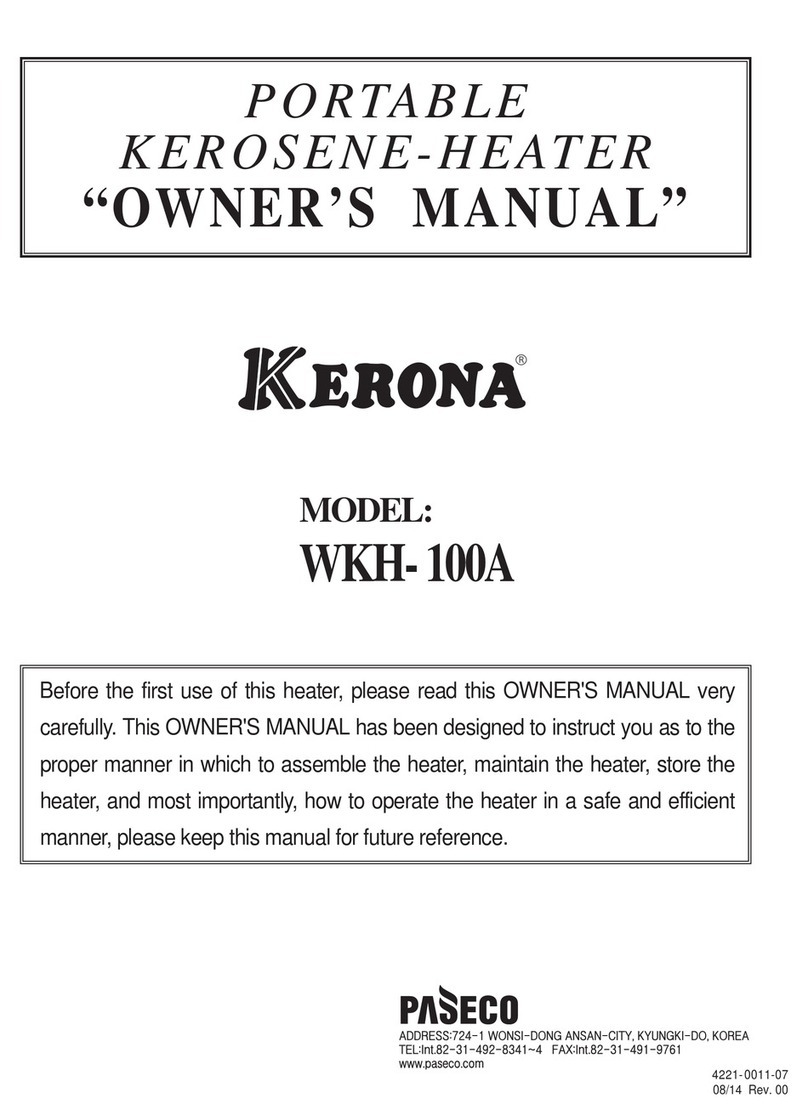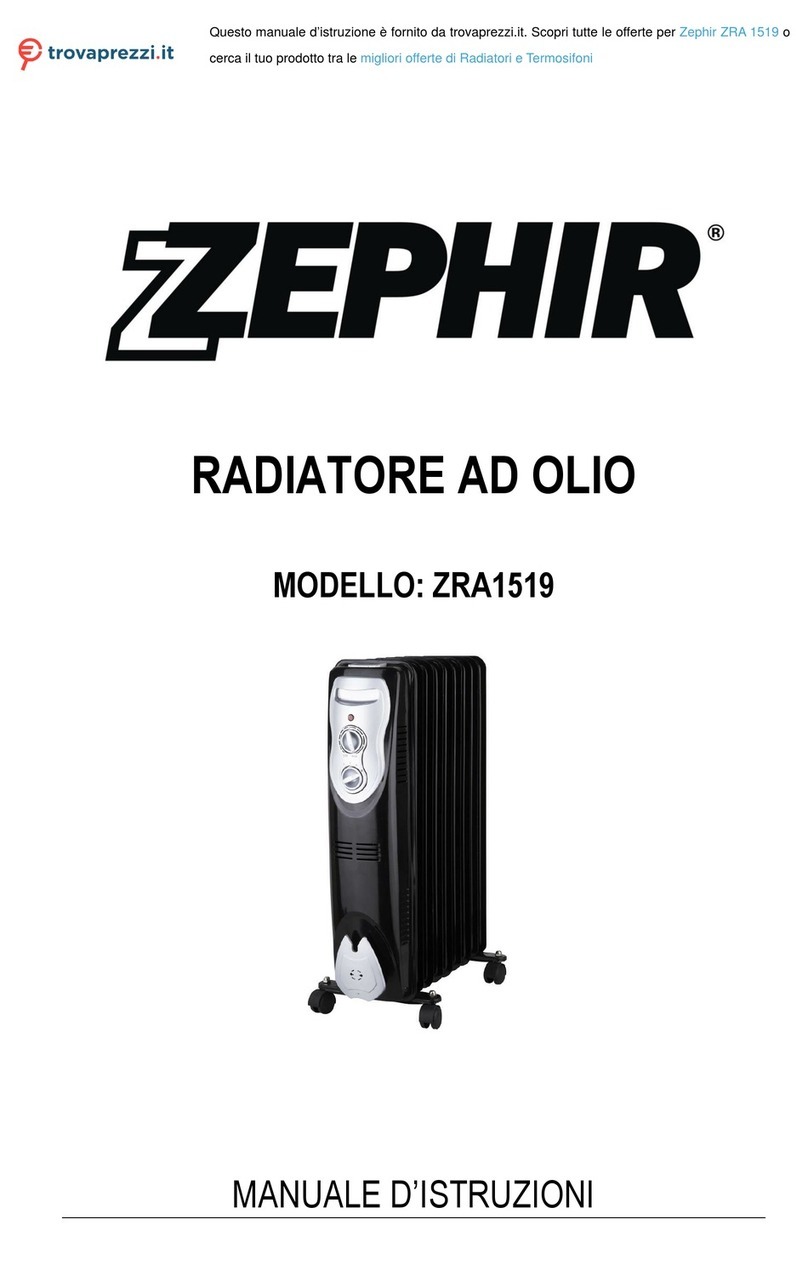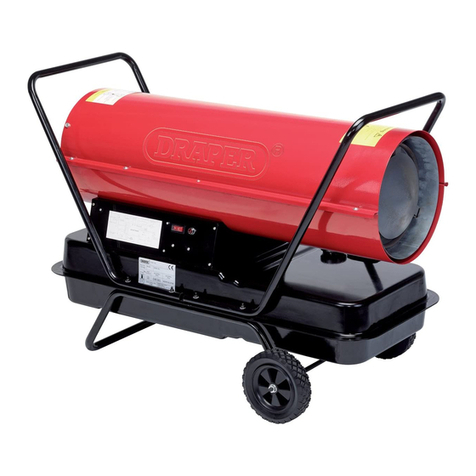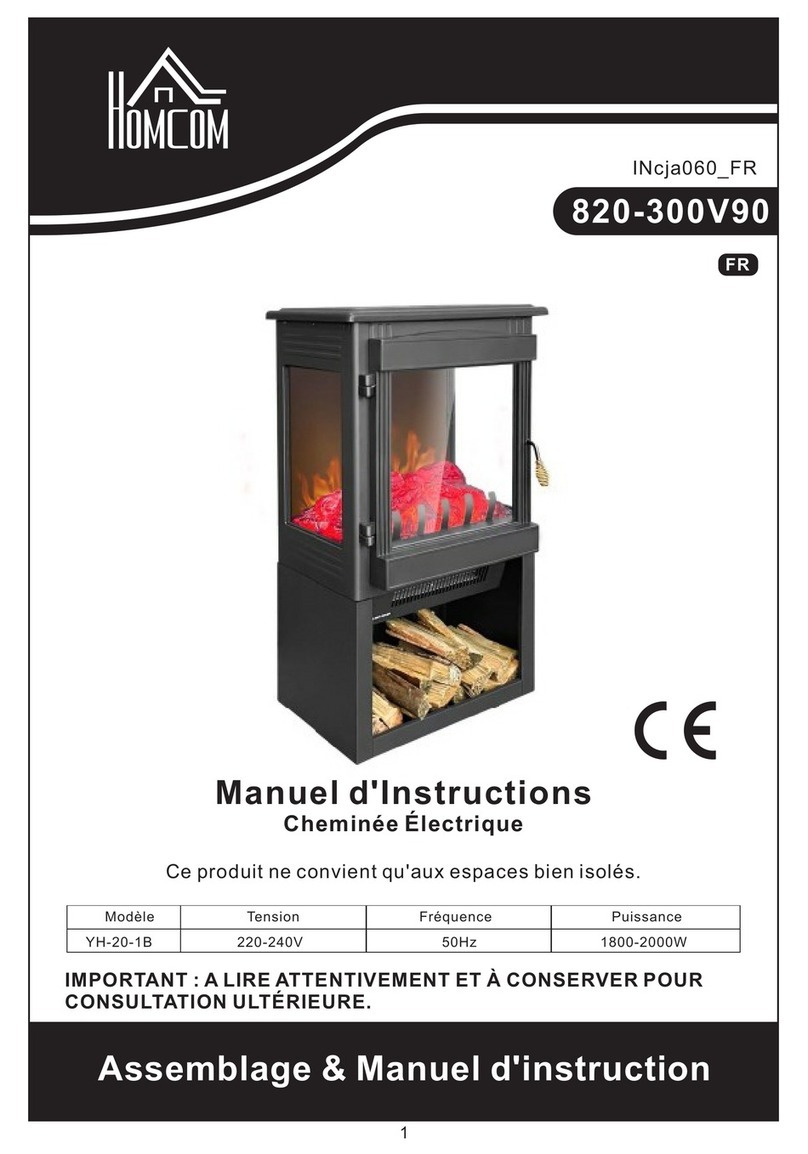Spitwater JETFIRE IP110 Operating instructions

ORIGINAL INSTRUCTIONS
OPERATING AND MAINTENANCE
MANUAL
WARNING: Read and understand this instruction manual before operating this
unit and retain for future reference.
Failure to follow operating, safety and maintenance instructions outlined in this
manual releases the manufacturer from any responsibility for any accidents or
damage incurred and may render any warranty void.
IP110
DIESEL INDIRECT FIRED
SPACE HEATER
NOT FOR DOMESTIC USE-SPACE HEATING ONLY
MADE IN ITALY
FOR
SPITWATER AUSTRALIA PTY LTD
953 METRY STREET
NORTH ALBURY NSW 2640
AUSTRALIA

Spitwater Australia is proudly Australian owned and operated since 1983. Our promise is to provide our
customers with superior quality portable industrial heaters built to the highest of standards that will see many
years of reliable service.
The JETFIRE range of portable industrial heaters are designed to give safe, efficient and reliable service
when the correct operating and safety instructions are followed, and proper attention is given to all required
maintenance procedures in order to maintain the unit in peak operating condition.
This manual provides the up to date information necessary for the user to operate the unit and carry out
regular inspection and maintenance.
Please note that the information given within this manual may be subject to revision in compliance with
Spitwater Australia’s policy of continual improvement.
The JETFIRE range of heaters should only be used in the manner and purpose for which they were intended
and in accordance with the recommendations and safety precautions detailed in this manual and in operating
instructions and stickers on the unit itself.
All JETFIRE heaters undergo rigorous safety and operational tests before being dispatched into the
marketplace however it is still imperative that prior to used, all operators have read and understood all
information and instructions provided and are aware of possible hazards.
Jetfire Heaters are specifically designed to solve all problems relating to heating drying and desiccating in
commercial and industrial applications. Some examples of applications are in warehouse and factory
heating, animal husbandry and greenhouse applications.
Spitwater has an extensive range of spare parts and accessories to suit all your heating needs.
For spare parts, accessories and service please contact 1800 SPITWATER (1800 774 892) and to view
Spitwater’s extensive range of Jetfire industrial heaters online visit www.spitwater.com.au
INTRODUCTION
GENERAL DESCRIPTION & INTENDED USE
SPARE PARTS, ACCESSORIES AND AFTER SALES SERVICE

TECHNICAL SPECIFICATIONS
IP 110
I S
II S
Combustion
Indirect
Max heating output
Hi
[kW]
75.06
110.02
[kcal/h]
64553
94616
Hs
[kW]
80.00
117.26
[BTU/h]
275214
403387
Net heating output
Hi
[kW]
66.80
99.02
[kcal/h]
57452
85155
Hs
[kW]
71.20
105.54
[BTU/h]
244941
363048
Air output
[m3/h]
5500
Fuel consumption
[kg/h]
6.330
9.278
Power supply
Phase
3
Voltage
[V]
400
Plug
[A]
15
Frequency
[Hz]
50
Power consumption
[W]
1820
Nozzle
[USgal/h]
2.00 –80° / W
Pump pressure
[bar]
8.5
12.5
Flue diameter
[mm]
150
Tank capacity
[l]
135
Noise level at 1 m
[dBA]
76
Dimensions, L x W x H
[mm]
1918 x 731 x 1220
Weight
[kg]
149
Fuse
[A]
15
Adjustment of combustion air flap
[N. °]
A = 5

1 COMBUSTION CHAMBER
2 BURNER
3NOZZLE
4 SOLENOID VALVE
5 DIESEL PUMP
6 FAN MOTOR
7 FAN
8 FUEL FILTER
9 FUEL CIRCUIT
10 SUPPORT/HANDLE
11 WHEEL
12 FUEL TANK
13 RESET BUTTON WITH CONTROL LAMP
14 MAIN SWITCH
15 ROOM THERMOSTAT PLUG
16 CONTROL LAMP
17 POWER CORD
18 HIGH-LOW THERMAL POWER SWITCH
19 BURNER MOTOR
20 AIR COMBUSTION ADJUSTMENT
21 INPUT VOLTAGE SWITCH
OPERATING DIAGRAM

IP110
IMPORTANT
Before using the space heater, carefully read all of the instructions and follow them
scrupulously.
The manufacturer cannot be held responsible for damage to persons and/or property caused
by improper use of the equipment.
This instruction manual is an integral part of the equipment and must therefore be stored
carefully and passed on with the unit in the event of a change of ownership.
GENERAL RECOMMENDATIONS
The space heaters run on diesel fuel. Direct
combustion versions send hot air and
combustion products into the room, while
indirect combustion versions are fitted with a
flue to discharge the fumes through the
chimney.
Always follow local regulations and codes
when using this heater:
•Follow the instructions in this booklet very
carefully;
•Use only in places free of flammable vapours
or high dust content;
•Keep inflammable material at a safe distance
from the heater (minimum 3 metres);
•Make sure firefighting equipment is readily
available;
•Ensure that the machine resting surface or
ground is not made of flammable material;
•Make sure sufficient fresh outside air is
provided according to the heater
requirements. Direct combustion heaters
should only be used in well vented areas in
order to avoid carbon monoxide poisoning;
•The indirect combustion heater is installed
near a chimney to take away the fumes (see
the paragraph “FUMES FLUE POSITIONING
DIAGRAM”) and connected to an electrical
switchboard;
•Make sure nothing is obstructing the
aspiration and expulsion of air; movement of
air may be obstructed in various ways
including placing covers or other objects on
the heater or positioning the heater too near
a wall or other large object;
•In case of very low temperatures add
kerosene to the heating oil;
•Make sure heater is always under
surveillance and keep children and animals
away from it;
•Before starting the heater always check free
rotation of the fan.
•Unplug heater when not in use.
SAFETY DEVICES
The heater is fitted with an electronic device
that controls the flame and the maximum safe
temperature by means of a photocell, two
overheat thermostats, and a fan start
thermostat.
The electronic device controls start/stop times
and trips the safety in case of malfunction. It
has a reset button (13) that can assume
different colours (Function Light) depending on
the function mode:
•Steady green: heater functioning normally;
•Steady red: heater in safety stop;
•Flashing orange: heating interrupted due to
excessive variations in voltage supply
(T<175V or T>265V); heating will resume
automatically when voltage returns in range
from 190 V and 250 V.
To restart heating after a safety stop, push
reset button (13) for 3 seconds.
Warning
NEVER do more than two restarts in
a row: uncombusted diesel fuel may
accumulate in the combustion
chamber and suddenly flare up at the
next restart.
If the safety stop persists, you have to find
and eliminate the cause of the stop before you
restart the heater. Push button (13) for at least
5 seconds to launch a self-diagnosis
programme, after which the button will assume

IP110
different colours (Self-diagnosis light)
depending on the type of safety that tripped:
•Flashing orange: false flame detected during
restart cycle.
•Flashing red: no flame during restart cycle.
•Flashing red/green: no flame during work
cycle.
•Steady orange: internal error of electronic
device.
Warning
See “TROUBLESHOOTING” to
identify the cause of the malfunction.
OPERATION
Before switching on the heater and, therefore,
before plugging it into the electrical power
supply, check that the power supply
specifications are the same as those stated on
the identification plate.
Warning
•The power line must be earthed
and fitted with a residual current
circuit breaker.
•The heater plug must be inserted
into a socket equipped with a
mains switch.
The heater must be placed on a flat, stable,
and levelled surface in order to prevent it from
overturning and/or diesel leaks from the tank
filler cap.
The heater can work in “ventilation” mode
turning the switch (14) to : the fan motor
starts, while the burner is off.
The heater works in “heating” mode, turning
the switch (14) to : the burner motor start,
immediately followed by ignition and
combustion. When the combustion chamber
becomes hot, the cooling fan motor starts.
To select the heating power level, turn the
switch (18) to the position corresponding to the
first stage (I S) or second stage (II S).
In heating mode the heater can run
automatically when connected to a control
device such as thermostat, time clock.
Connection of control is made to connectors 2
and 3 of the plug (15) fitted to the heater after
having removed the bridge between 2 and 3 as
fitted ex works. This bridge should be kept and
retrofitted if manual running of heater is
whished at another time.
Warning
At the end of the start cycle, the
electronic control device causes
button (13) to flash briefly to confirm
completion of the heater start cycle.
When unit is started for the first time or is
started after the oil tank has been totally
emptied, the diesel flow to the burner may be
impaired by air in the circuit. In this case the
control box will cut out the heater and it might
be necessary to renew the starting procedure
once by depressing the reset button (13).
If the heater does not function, the first things
to do are:
1. Check that the tank still contains some
diesel;
2. Push reset button (13);
3. If the heater still does not function, see
TROUBLESHOOTING” to identify the
cause of the malfunction.
II S
I S

IP110
Warning
Never stop the machine by
unplugging the electrical plug: this
could cause overheating.
STOPPING THE HEATER
Set main switch (14) on “0” position or turn
thermostat or other control device on lowest
setting.
The flame goes out and the fan continues to
work for approximately 90 sec. cooling the
combustion chamber.
TRANSPORT
Warning
Before moving the heater:
•Stop the heater as indicated in the
“STOP” paragraph;
•Cut electrical power by removing
the plug from the electrical socket;
•Wait until the heater cools.
Before moving the heater, make sure the oil
tank cap is securely attached.
Warning
Diesel may leak during handling and
transport: the fuel tank cap is not
sealed. This allows air to enter and
allows the tank to be emptied while
the heater is running.
The heater can be supplied in a mobile version
(with wheels) or wall version mounted on a
support structure with anchors for fastening by
means of ropes or chains. To move the mobile
version, just grip the heater by the support
handle and roll it on the wheels. The second
version must be lifted by using a lift truck or
similar equipment.
In this case, make sure that the ropes and/or
chains are securely attached and that they are
in perfect condition before you start to move
the heater.
MAINTENANCE
To ensure correct heater function, you have to
clean the combustion chamber, burner, and fan
at regular intervals.
Warning
Before starting any maintenance
procedure, ALWAYS:
•Stop the heater as indicated in the
“STOP” paragraph;
•Cut electrical power by removing
the plug from the electrical socket;
•Wait until the heater cools.
Periodic maintenance of the heater is
necessary to ensure proper performance and
to prevent failures. To ensure correct heater
function, the combustion chamber, burner, and
fan must be cleaned at regular intervals by a
qualified service technician. Maintenance
should be performed at the following periodic
intervals:
Daily maintenance (customer to perform)
•Inspect air inlet / air outlet and exhaust
stack, remove debris if any
•If any air duct is installed, secure it is fixed.
Minimize bends and keeps ducts straight
•Verify fuel tank is full
•Verify that exhaust stack is properly
installed
Weekly maintenance (customer to perform)
•Disassemble, inspect and clean fuel filter
with clean fuel
Every 50 hours maintenance (qualified
Spitwater service technician to carry out)
•Remove top cover and clean the motor, fan
blade and the interior shell
•Inspect the fuel hose assembly and check
for any leaks
Every six months maintenance (qualified
Spitwater service technician to carry out)
•Disassemble burner head
oInspect and clean burner diffuser
oInspect and replace nozzle if
necessary
oClean ignition electrodes and adjust
settings
oCheck air combustion setting
•Check overheat thermostat
•Inspect and clean the combustion chamber
•Open electric board, inspect electrical
components and check connections.

IP110
•Check fuel pressure setting of fuel pump
•Inspect and test the burner.

IP110
ASSEMBLY INSTRUCTIONS

IP110
RECOMMENDED CHIMNEY LAY-OUT
DESCRIPTION
A) Minimum 1 m
B) Minimum 1 m
C) As short as possible
D) Greater than or equal to diameter of heater smoke outlet
E) Minimum 1 m
1) Anti-wind device provided with heater
2) Horizontal crossing with 5° minimum upward slope
3) Chimney with minimum internal dimensions 20 x 20 cm
4) Chimney anti-explosion inspection door
5) External buffer wall
6) Chimney draught H shape
N.B. The above recommendations are approximate. The chimney installation must comply with local
regulations.
Attention: the anti-wind device (3) MUST be positioned as shown in the drawings on the left.
Otherwise, the heater may not work or may present serious combustion problems.
INSTALLATION GUIDE

IP110
PROBLEM
RESET BUTTON (13)
CAUSE
REMEDY
Motor does not
start, no ignition
FUNCTION LIGHT
Off
SELF-DIAGNOSIS LIGHT
-
Wrong setting of room
thermostat or other
control
Check correct setting of heater control. If
thermostat, make sure selected temperature is
higher than room temperature
Defective thermostat or
other control
Contact authorised Spitwater service agent
Fan does not start
or stops during
start-up or heating
Flashing
orange
-
No electrical current
Check mains
Check proper positioning and functioning of switch,
If incorrect contact authorised Spitwater service
agent
Contact authorised Spitwater service agent
Possible electricity
supply problem
Contact licenced electrician
Fan stops during
start-up or heating
Steady red
Flashing
orange
Presence of flame
before transformer
ignites
Contact authorised Spitwater service agent
Defective photocell
Contact authorised Spitwater service agent
Flashing
red or
flashing
red/green
Defective electrical
motor
Contact authorised Spitwater service agent
Defective electrical
motor bearings
Contact authorised Spitwater service agent
Burned out condenser
Contact authorised Spitwater service agent
Defective electric ignitor
Contact authorised Spitwater service agent
Defective flame control
box
Contact authorised Spitwater service agent
Defective photocell
Contact authorised Spitwater service agent
Insufficient or no fuel at
burner
Contact authorised Spitwater service agent
Defective solenoid
Defective electric ignitor
Contact authorised Spitwater service agent
Flashing
orange
Internal error of
electronic device
Contact authorised Spitwater service agent
Fan starts and
flame lights,
generating fumes
Steady green
-
Insufficient combustion
air
Make sure air inlet and outlet are free
Contact authorised Spitwater service agent
Excess combustion air
Contact authorised Spitwater service agent
Fuel contaminated or
contains water
Contact authorised Spitwater service agent
Air leaks in fuel circuit
Check the seals on the ducts and the diesel filter
Insufficient fuel at
burner
Contact authorised Spitwater service agent
Excess fuel at burner
Contact authorised Spitwater service agent
Heater does not
stop
Steady green
-
Defective solenoid seal
Contact authorised Spitwater service agent
Fan (6) does not
start or does not
stop
Steady green
FA thermostat not
working
Check the FA thermostat and its connections;
replace if necessary
If the heater is still not working properly, please contact your nearest authorized dealer.
TROUBLE SHOOTING

IP110
AP CONTROL BOX
TA ROOM THERMOSTAT PLUG
ST ELECTRIC PILOT LAMP
FU FUSE
LI1 OVERHEAT THERMOSTAT
EV1 SOLENOID VALVE I° Stage
MB BURNER MOTOR
CO CAPACITOR
IT TRANSFORMER H.V.
LI2 OVERHEAT SAFETY THERMOSTAT
FO PHOTOCELL
MV FAN MOTOR
FUA FUSE
RV CONTROL SWITCH
EV2 SOLENOID VALVE II° Stage
LF ANTI-JAMMING FILTER
TF PLUG OF PRE-HEATED FILTER
DV HIGH –LOW THERMAL POWER SWITCH
RF HEAT FILTER
FA FAN THERMOSTAT
TD TRANSFORMER
WIRING DIAGRAM
Table of contents
Other Spitwater Heater manuals
Popular Heater manuals by other brands

MrHeater
MrHeater HEATSTAR MH80CVNG Operating instructions and owner's manual
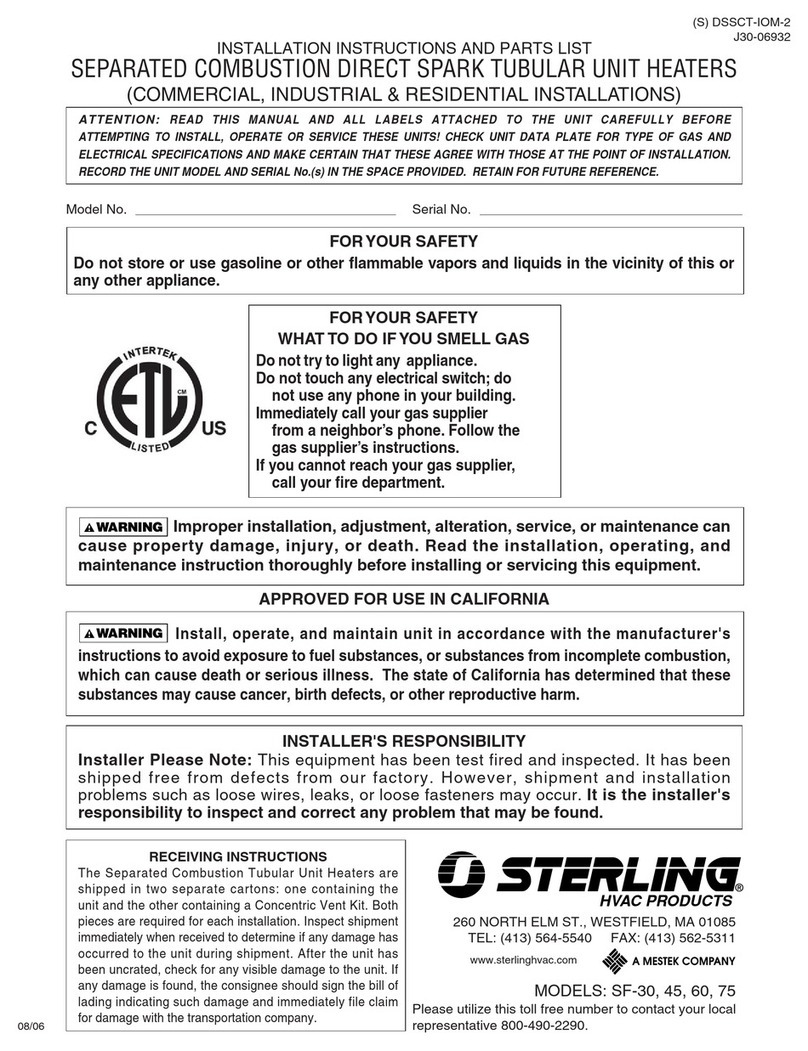
Sterling
Sterling Separated Combustion Tubular Gas Fired... Installation instructions and parts list
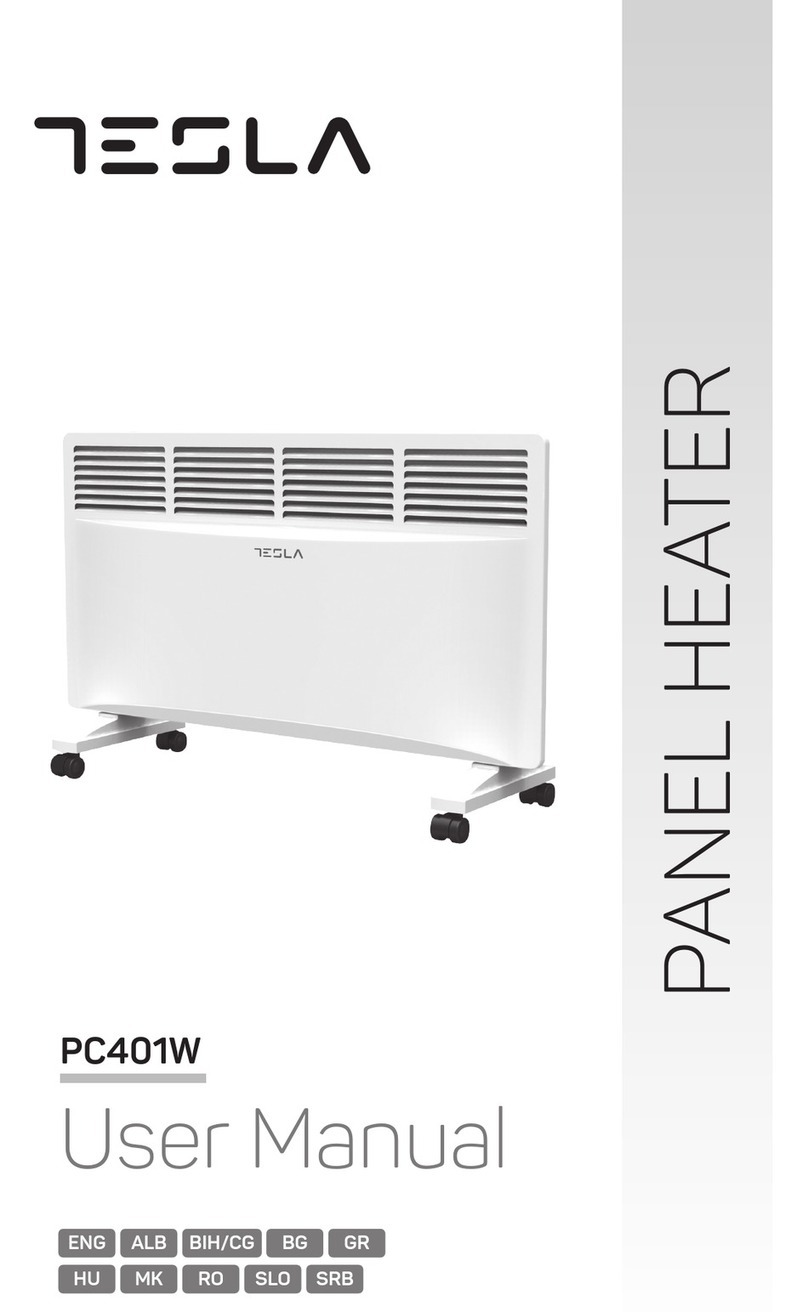
Tesla
Tesla PC401W user manual
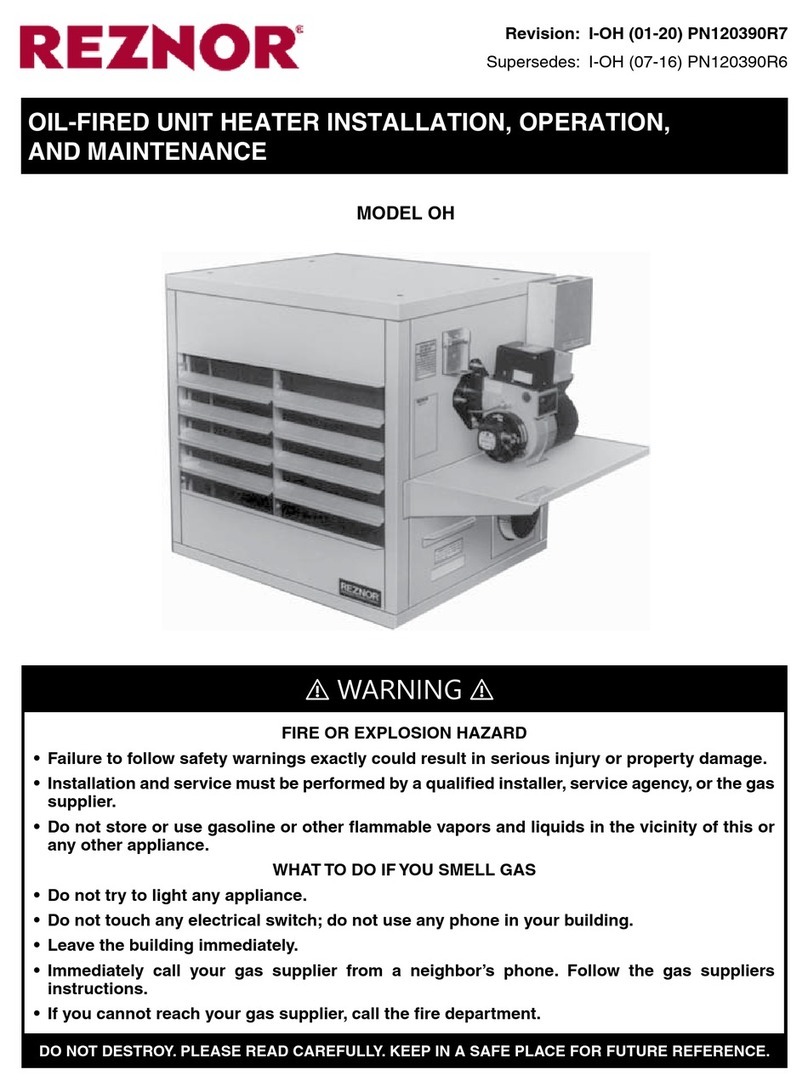
Reznor
Reznor OH Installation, operation and maintenance
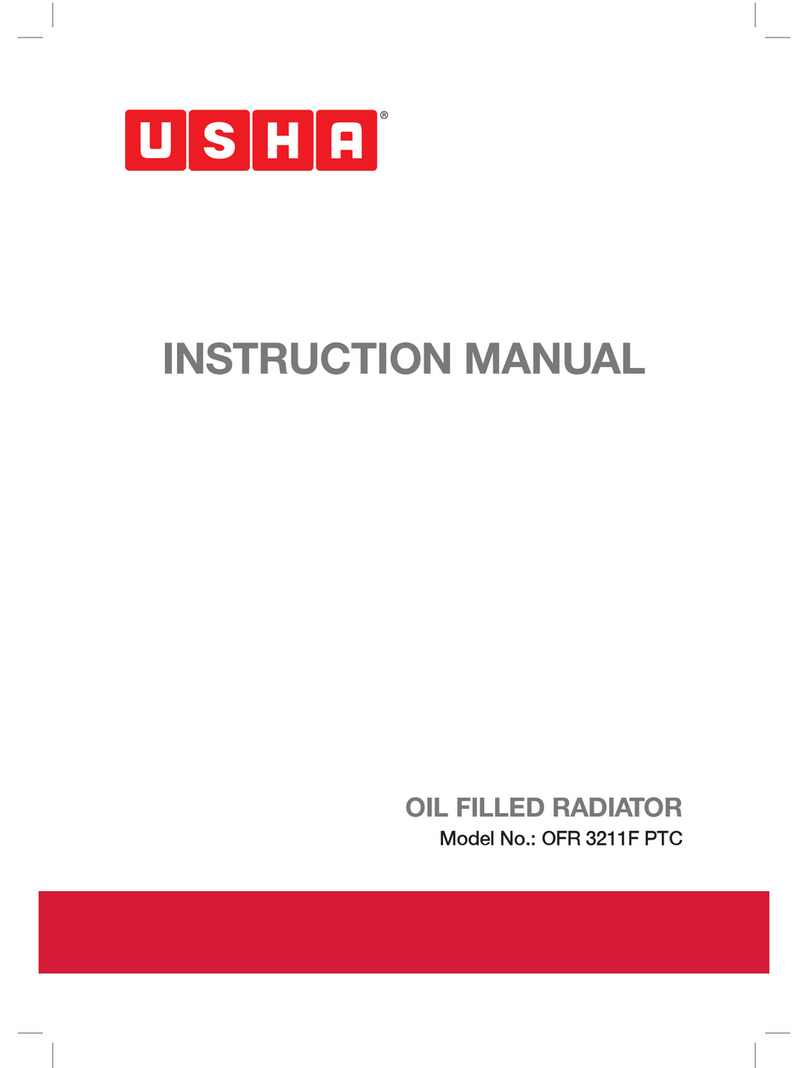
usha
usha OFR 3211F PTC instruction manual

Hatco
Hatco GLO-RAY GR Series Installation and operating manual
